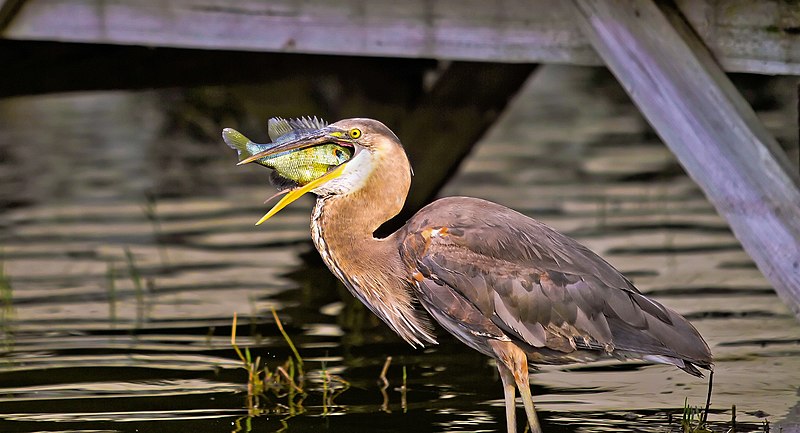 Hi, Jose here. Last time, I blogged about keeping tropicals outside and how the sunlight, natural foods and warm temperatures can benefit tropical species. While the benefits are great, there are also some cautions to consider. This time I’d like to talk about some of the dangers and pests that may wreak havoc on our poor little fishies.
Hi, Jose here. Last time, I blogged about keeping tropicals outside and how the sunlight, natural foods and warm temperatures can benefit tropical species. While the benefits are great, there are also some cautions to consider. This time I’d like to talk about some of the dangers and pests that may wreak havoc on our poor little fishies.
I was lucky not to have my pond visited by pests, but local stray cats, opossums, raccoons, snakes or predatory birds that may decide to visit your pond at any time. Even bugs like dragonfly nymphs can prey on young and small fish. Ample water movement and surface ripples are usually enough to deter them, but more effort may be needed to deter larger predators. There are some easy ways that you can help to protect your fish while they enjoy their outdoor summer vacation. Personally, I would recommend the live plants. You can use floating foliage like water lilies, duck weed or hyacinths for cover and protection for your fish. Young fish will also hide in the roots and feed on the small bugs that live in the roots. Another solution is the use of pond netting. The netting can prevent many predators from snatching your fish out of the water. Not very aesthetic, but effective.
Pesticides and other contaminants may pose a hazard in an outdoor environment. Toxins can be washed into a pond during heavy downpours or may be blown into the  water. The rish is small as long as you stay aware when applying such products…something to keep in mind. Even the rain itself can be a danger to your fish. Acidic rain can drive your ph to low levels if you have a low kh. Depending on the species you’re keeping, such fluctuations can wipe fish out quickly. I was able to keep the kh high and the ph stable with weekly buffered water changes so thi swas never a problem in my experiences.
water. The rish is small as long as you stay aware when applying such products…something to keep in mind. Even the rain itself can be a danger to your fish. Acidic rain can drive your ph to low levels if you have a low kh. Depending on the species you’re keeping, such fluctuations can wipe fish out quickly. I was able to keep the kh high and the ph stable with weekly buffered water changes so thi swas never a problem in my experiences.
Cool temps are the other concern. It’s important to know when to bring them in. For me, when night temperatures start dipping below 75 F, I know it’s time to bring them back to the tank. You may notice the fish becoming lethargic, and some may even die if you don’t pay close attention at the end of summer. I recommend acclimating them slowly back to indoor temperatures. If the filter running the pond is a canister filter, I would recommend keeping it running on the main tank. Clean it out before bringing it inside, but you’ll be supplying an established filter/biological for your indoor tank, and you don’t have to wait for the whole cycling process. We drain the pond each year and look for babies. You can then either store it till the following year or couple of set it back up in the house for the winter.
Well, that’s it for now! Let me know if you have any questions on the topic.
Until next time,
Jose
Green Heron with fish image referenced from wikipedia and originally posted by Craig O’Neal
 That Fish Blog – Aquarium Advice and Information
That Fish Blog – Aquarium Advice and Information

Thanks for every other informative blog. The place else may I am getting that type of information written in such
a perfect way? I’ve a project that I’m just now working on, and I have been at the glance out for such information.